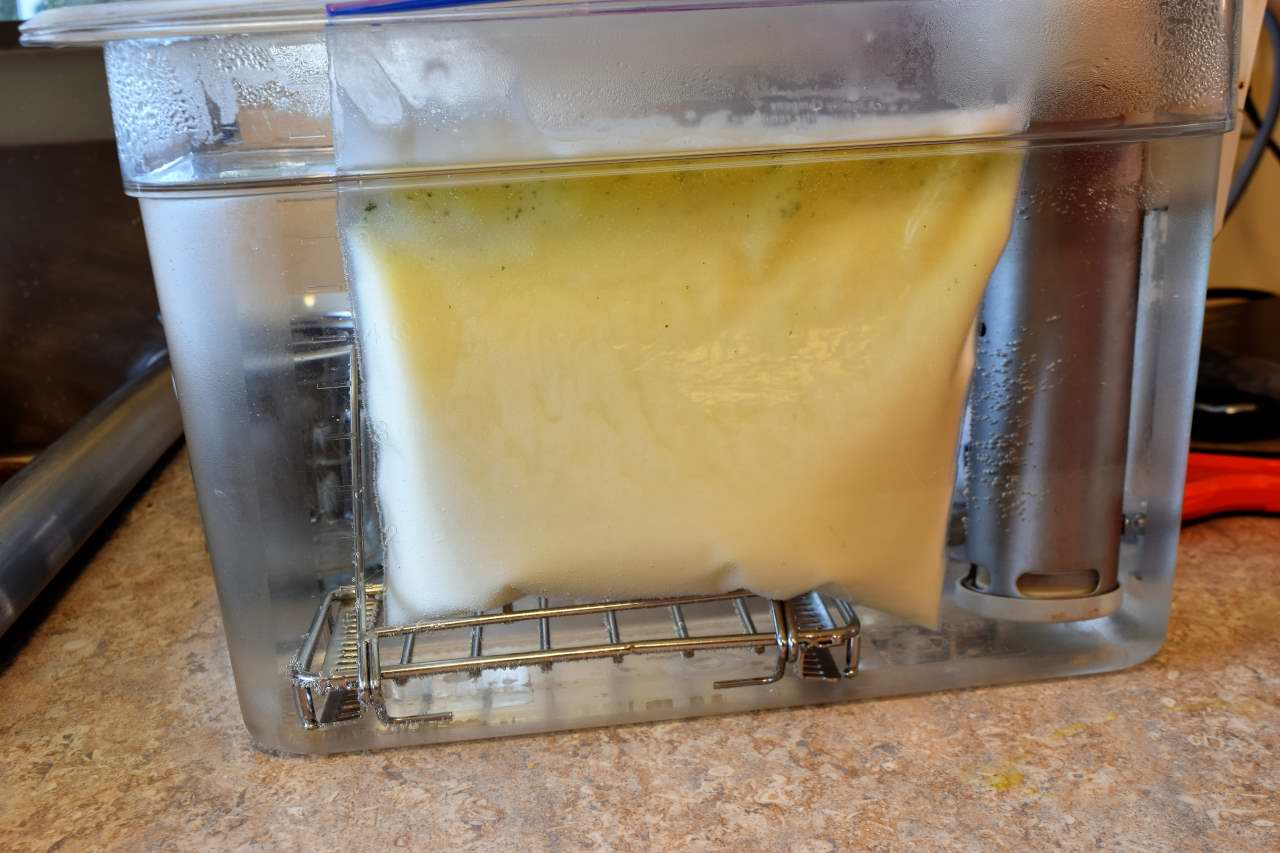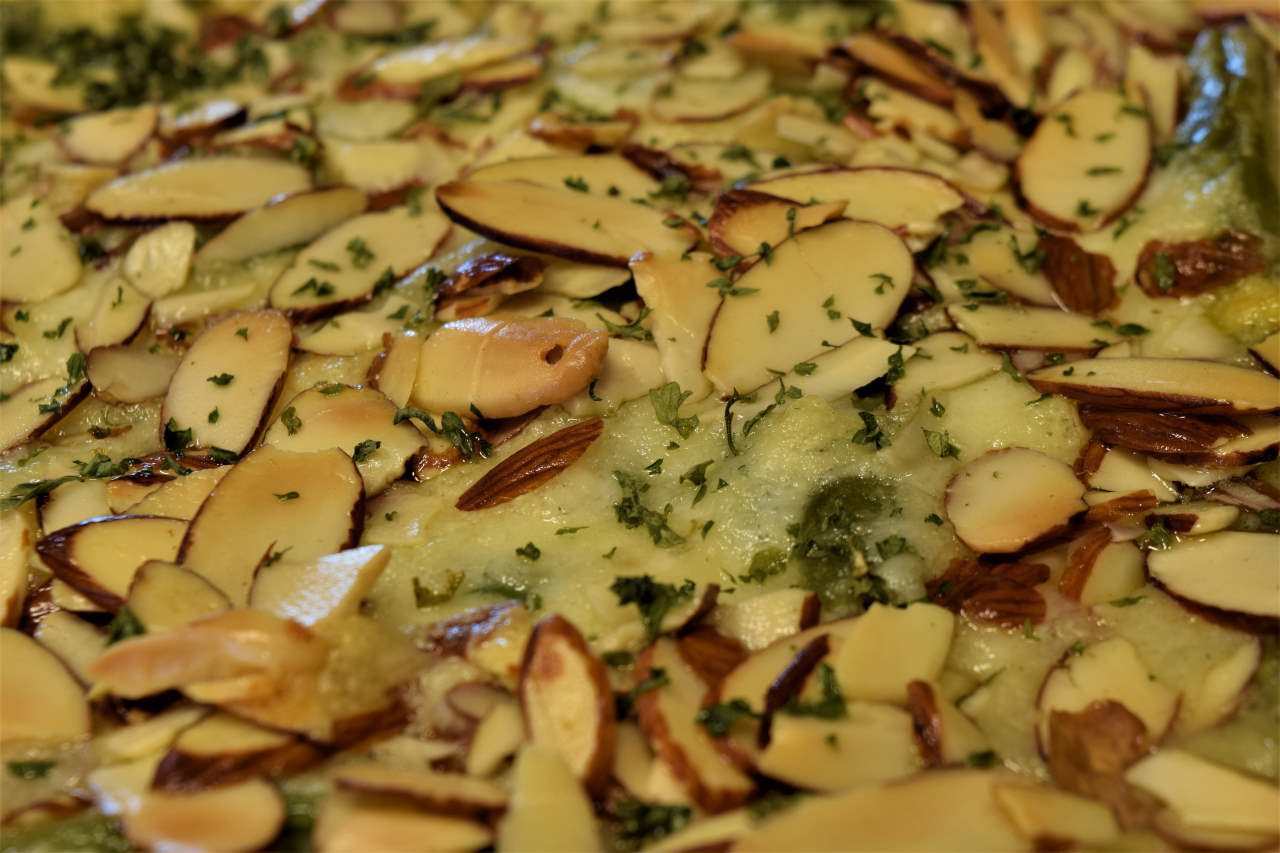Level of difficulty: 3
Procedure:
Put 1/3 of the bouillon, the butter, and the flour in a blender. Do not overmix. You can also mix by hand using a whip or a wooden spoon. This should form a very light paste. Add the remaining bouillon, and pulse for only one second. Over mixing can damage the flour granules.
Pour the liquid into a Ziploc Quart Freezer bag, and lower into a sous vide bath @
183F/84C
Process for at least one hour. Remove from bath and allow to cool slightly. Gently move the sauce around in the bag to distribute it evenly. Remove from bag into an appropriate container, and again, stir lightly. A blender can be used for this process but over mixing will break the sauce, so pulse for just a second or two.
Some cooks insist on straining the veloute to eliminate clusters–they’re not really lumps. I usually avoid it because it should not be necessary and it also puts unnecessary strain on the consistency–even the simple act of straining can cause this sauce to break. Check the seasonings and adjust as necessary.
At service, add the cream. Only enough to cloud the sauce is the guideline. The sauce is now ready for use in any recipe calling for veloute. Sherry, Marsala, and other flavorings can be denatured and added as needed. The sample below is garnished with a crouton, licorice gastrique, and chive.
For a more detailed discussion of this sauce, click HERE. Here is an example of veloute applied as the base for a green bean casserole with almonds:
The beans can be sous vide processed, here is the method. Otherwise, simply cook green beans in boiling salted water for 5 minutes, drain and shock cold.
Toss the beans with your veloute sauce, top with almonds and bake in an oven at
350F/176C
until the almonds are brown on top–about half an hour–it’s that easy!
Watch this site as we continue to post recipes for classic sauces as well as forward looking products!






